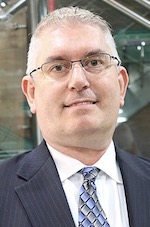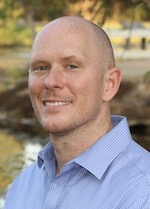Daily Business Report: Tuesday, Feb. 8, 2022
California will reward volunteering college students
with aid — but spend half the money on overhead
By Mikhail Zinshteyn | CalMatters
A new California program to financially reward college students for volunteering has drawn national attention — but less than half of its budgeted money is going to actual student aid.
The California Volunteers College Corps program, backed by $159 million in mostly state money, promises to award up to $10,000 to 6,668 low-income students who volunteer in K-12 education, on climate action or to reduce food insecurity.
That only works out to $66.7 million for students, though. So where is the other $92 million going?
Mostly it’s going to hiring and administrative costs despite no guarantee the program will continue past 2024. Some experts think that money split makes sense because students could benefit from training and there’s a chance the program would get additional funding in the future. Other experts think the money should go directly to students, so fewer of them will have to work on top of their other responsibilities.
“I think this is a classic question of is it better to give a person a fish or teach them how to fish,” said Nora Silver, a professor who studies nonprofits at UC Berkeley’s business school and herself led a volunteer program.
To her, the program does both: It gives students money directly and includes a lot of programming to train students and connect what they learned as volunteers to the job market.
Nor does she find the total costs of the program out of whack. The budget details to build out the network of colleges and nonprofits — including career, academic and financial aid advising for student volunteers — are “necessary to offer a well-functioning program,” said Silver.
TOP PHOTO: Students on the campus of Cal State San Marcos.
Many children still exposed to tobacco smoke
pollution even in ‘smoke free’ homes
The person who smoked a pack a day may have moved out years ago, but the toxic substances left behind stuck around. And to this day, the particles that settled deep into furniture, carpets–even the drywall–remain available to be picked up and adsorbed by growing children.
In fact, more than 95 percent of children living in homes considered smoke-free carry detectable levels of nicotine on their hands, which means a stew of toxicants found in tobacco smoke is finding its way into growing kids even though parents are trying to keep the smoke out. That’s the surprising new finding about thirdhand smoke published Feb. 7, 2022, in JAMA Network Open,by researchers at Cincinnati Children’s and San Diego State University.
No level of exposure to tobacco pollution is considered “safe” for kids. But the research team has just begun the work needed to match up thirdhand smoke exposure levels to specific health outcomes — a task that will take years.
“This is the first part of a much larger study,” says corresponding author Gregg Matt, a professor at San Diego State and director of the Thirdhand Smoke Resource Center. “We are publishing the first part because it was so stunning how widespread the exposure issues are.”

New sensor grids record human brain
signals in record-breaking resolution
A team of engineers, neurosurgeons and medical researchers has published data from both humans and rats demonstrating that a new array of brain sensors can record electrical signals directly from the surface of the human brain in record-breaking detail. The new brain sensors feature densely packed grids of either 1,024 or 2,048 embedded electrocorticography (ECoG) sensors. The paper was published by the journal Science Translational Medicine on Jan. 19, 2022.
These thin, pliable grids of ECoG sensors, if approved for clinical use, would offer neurosurgeons brain-signal information directly from the surface of the brain’s cortex in 100 times higher resolution than what is available today. Access to this highly detailed perspective on which specific areas of the tissue at the brain’s surface, or cerebral cortex, are active, and when, could provide better guidance for planning surgeries to remove brain tumors and surgically treat drug-resistant epilepsy. Longer term, the team is working on wireless versions of these high resolution ECoG grids that could be used for up to 30 days of brain monitoring for people with intractable epilepsy.
Firestone to pay penalties in hazardous waste case
Firestone Complete Auto Care has agreed to a nearly $4 million settlement with 29 cities and counties throughout California, including the City of San Diego. The auto care retail chain was sued in a civil prosecution in a wide-ranging environmental protection case that alleged the company unlawfully disposed of hazardous waste.
The court ordered $2.865 million in civil penalties to be paid by Bridgestone Retail Operations, LLC, the company that does business as Firestone Complete Auto Care at more than 150 locations in California.
The civil complaint, filed in Santa Clara County Superior Court, alleged that the automotive repair company did not properly manage hazardous waste, such as solvents, automotive fluids, aerosols, batteries, and electronic devices.
Firestone also was ordered to pay $350,000 for the cost of the investigation and $725,000 in agreed-upon compliance and training expenditures. Firestone cooperated with prosecutors during the investigation and took steps to improve its compliance with the environmental and consumer protection violations brought to its attention.
San Diego’s share of the civil penalties will be $100,000, an amount based on violations by Firestone locations within the City of San Diego. The funds will be used to pay for the City Attorney’s continued consumer and environmental enforcement activities.
Sanford Burnham Prebys professor awarded
$2.9 million to explore Alzheimer’s treatment
Sanford Burnham Prebys professor Yu Yamaguchi, M.D., has been awarded a $2.9 million grant from the National Institutes of Health to study the role of heparan sulfate (HS) in Alzheimer’s disease. HS is a structural molecule found in the scaffolding between cells that has been previously observed to influence the development of Alzheimer’s disease. However, the precise function it plays in the brain has not been studied closely.
The new project will fill this gap in knowledge and open new avenues for the diagnosis, treatment and prevention of Alzheimer’s disease.
“Our hypothesis is that heparan sulfate mediates the development of Alzheimer’s by binding to a brain protein that is critical for the development of the disease,” says Yamaguchi. “If we can develop an inhibitor to block this interaction, that could provide us with new ways to treat the disease.”
Northrop Grumman delivers first production
IFC-4 Triton to U.S. Navy
Northrop Grumman Corporation MQ-4C Triton takes to the skies over the California desert as the Triton low-rate initial production schedule progresses.
Known as B8, this is the first production Triton to be upgraded to the multi-intelligence configuration to meet the Navy’s critical maritime intelligence, surveillance, reconnaissance and targeting needs. B8 was delivered to Naval Air Station Patuxent River, Maryland, on Feb. 1
Agnes Wong Nickerson appointed vice president
of business and finance at San Diego State University
Agnes Wong Nickerson, who has served as interim vice president for business and financial affairs and chief financial officer at San Diego State University since March 2019, has been appointed to the permanent role following a national search.
Wong Nickerson, a certified public accountant, has been involved in the management of San Diego State University’s budget and auxiliaries since 2014, and has spearheaded the creation of more transparent budget reporting, multi-year priority setting, and improved fiscal resilience in recent years.
In addition to providing direction for SDSU’s administrative and budgetary functions, Wong Nickerson has been instrumental in the development of SDSU Mission Valley, in co-chairing the current strategic plan implementation, and in the university’s effective response around the COVID-19 pandemic.
She oversees the university’s annual budget of more than $1 billion, which includes the university auxiliary organizations, and a divisional staff that totals more than 650 employees.
Troy Holmes joins TechFlow as vice president strategy
TechFlow, a logistics and digital services solutions company, has hired Troy Holmes as vice president strategy. In this new role, Holmes will lead the strategic initiatives of TechFlow’s Digital Services business unit.
With over 30 years’ experience bringing innovative technology solutions to national security and federal civilian agencies, Holmes has played a key role in IT modernization efforts at Department of Homeland Security’s (DHS) U.S. Citizenship and Immigration Services, the U.S. Immigration Customs Enforcement (ICE), and the U.S. Department of Interior.
One of his notable accomplishments was leading the development of the nationwide Law Enforcement Information Sharing Service for DHS.
“Troy has led some of the most advanced modernization efforts at DHS using agile development processes,” said Glenn Doughty, TechFlow VP digital services. “In joining the TechFlow team, he will continue to provide strategic assistance to government organizations to realize critical digital transformation and modernization outcomes. His experience will further strengthen our digital services capabilities and ability to deliver significant impacts to keep our nation safe.”
James Sly appointed to San Diego County
Regional Airport Authority board
James Sly, president and CEO of East County Economic Development Council (ECEDC), has been appointed to the San Diego County Regional Airport Authority board.
Sly was appointed by East County San Diego mayors to represent the East County on the board for a three-year term, succeeding Robert Lloyd, who completed his three-year term on Jan. 31, 2022.
Sly began working at the ECEDC in 2012 after serving in multiple business consulting roles.
During his tenure, he has worked to develop more than $40 million in new income through strategic partnerships, new contracts, and fundraising.
A Santee resident, Sly graduated from San Diego State University with a degree in business management and administration and completed a nonprofit management development program at the Harvard Business School.
Cubic and McMaster University partner
to launch Centre of Excellence
Cubic Corporation’sCubic Transportation Systems business division and McMaster University are partnering to launch the Centre of Excellence for Artificial Intelligence and Smart Mobility. This long-term program will develop the building blocks to design the future of inclusive mobility through innovation and technology collaboration between government, academia, and the public and private sectors. The program will also train the next generation of engineers, scientists, and leaders through hands-on research and product development with public and private mobility service providers.
Experts at the McMaster Automotive Resource Centre (MARC), one of the most extensive transportation research institutes in North America and headquarters of the new centre, and CTS, the leading provider of transportation and traffic management solutions, will work together to address complex issues facing transportation systems through multidisciplinary research and product development.
San Diego’s Cue Health to provide COVID-19
tests to Johns Hopkins Medicine
Cue Health, a San Diego health care technology company, said it will provide Cue Health Monitoring Systems and Cue COVID-19 tests to Johns Hopkins Medicine (JHM), which includes Johns Hopkins University School of Medicine and The Johns Hopkins Hospital and Health System.
The portable monitoring system and tests will be utilized by physicians, scientists, health professionals, faculty and staff as part of JHM’s commitment to health and well-being among its entire employee population. In addition, JHM will have access to a Cue Health Enterprise Dashboard, which allows for test results to be shared through a secure, web-based internal application. This helps organizations manage population health and access timely data and analytics to enable administrators to swiftly identify trends and make informed decisions.
P&G President Laura Becker and business
coach Ryan Leak to headline GS1 Connect
Procter & Gamble (P&G) President of Global Business Services (GBS) Laura Becker, along with business coach and consultant Ryan Leak, will serve as keynote speakers at GS1 Connect 2022, the live three-day event taking place June 7-9, 2022, in San Diego. GS1 Connect 2022 provides a forum for supply chain, e-commerce and technology professionals to learn best practices for leveraging GS1 Standards in supply chain and e-commerce operations to drive business growth.
At P&G, Laura Becker leads the GBS organization, which operates and supports the infrastructure, operations, systems and shared services that run P&G.
A sought-after speaker, coach and consultant, Ryan Leak has deep expertise in empowering leaders across the globe to reclaim a new self-awareness that enables them to connect with their communities more effectively.
Teledyne Marine awarded $16 million
contract from U.S. Geological Survey
Teledyne Marine, a business unit of San Diego’s Teledyne Technologies Inc. and a leading supplier of marine technology, has received a contract from the United States Geological Survey (USGS) for up to $16 million over a five-year period. The contract encompasses products from across the Teledyne Marine portfolio to support the agency’s diverse initiatives. The USGS is tasked with providing science about the natural hazards that threaten lives and livelihoods; the water, energy, minerals, and other natural resources; the health of our ecosystems and environment; and the impacts of climate and land-use change.
The Teledyne Marine brands have been supplying the USGS with technology to support their endeavors for over 20 years and the expansion of offering in this latest IDIQ emphasizes Teledyne’s ongoing commitment to support the agency in their mission critical endeavors.
Endeavor BioMedicines closes $101 million
Series B financing
Endeavor BioMedicines, a San Diego clinical-stage biotechnology company, announced the completion of a $101 million Series B financing, led by Ally Bridge Group and Avidity Partners. New investors participating in the round include Perceptive Advisors, Piper Heartland Healthcare Capital, Revelation Partners, funds managed by Tekla Capital Management LLC, and funds and accounts advised by T. Rowe Price Associates Inc. Existing investors Omega Funds and Longitude Capital also participated.
Proceeds will support the advancement of Endeavor’s pipeline programs, including ENV-101, a small molecule inhibitor of the PTCH1 receptor in the Hedgehog signaling pathway for the treatment of cancer and idiopathic pulmonary fibrosis (IPF), as well as ENV-201, a potentially best-in-class small molecule inhibitor of ULK1/2 for the treatment of KRAS-driven cancers.









